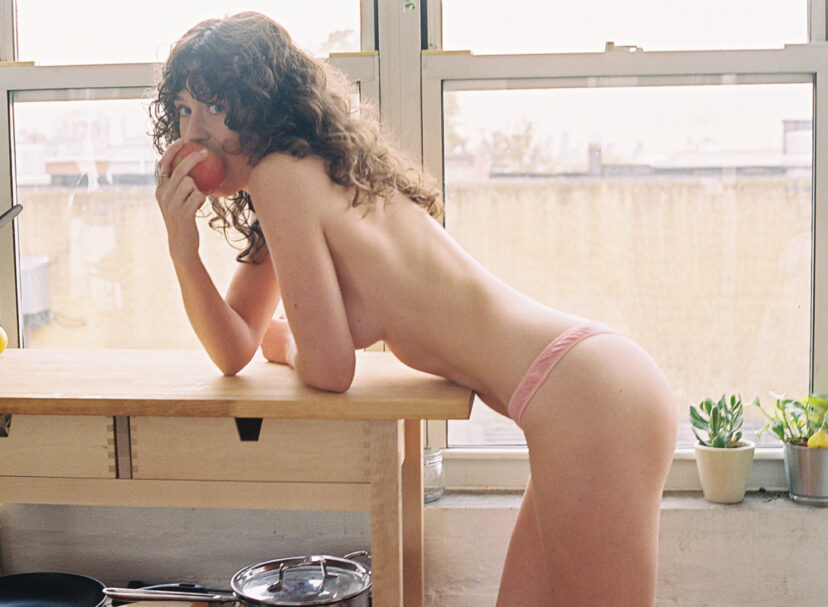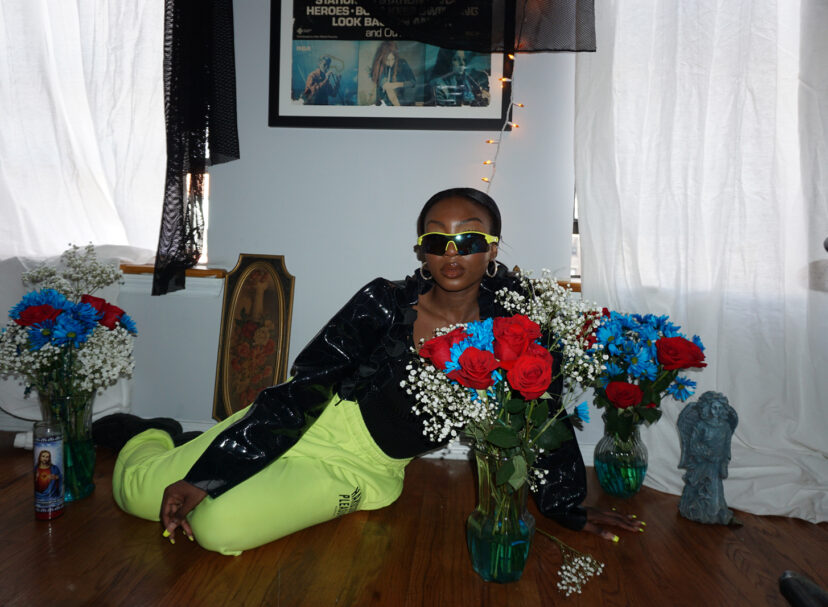Text & Interview: Monica Uszerowicz
Photo: Todd Weaver
Los Angeles jewelry designer Kathleen Whitaker makes archetypal treasures—fine and architectural and precious, they’re jewels in the most truthful sense of the word. Her dot and sphere stud earrings, gold bar rings, and thin, rectangular pins (now ubiquitous trends), made only with pure metal, are timeless; her Stone Collection, which pairs her simple shapes with gems and minerals like tourmaline, is equally classic and understated even in its most dramatic strides, like an inches-long Venetian glass earring. Whitaker has a background in ceramics and pays close attention to the delicate space between function and especially beautiful form. Below is a brief but candid conversation with the artist about her vision, history, and her shift from working in finances to the art of making dreamy forms.




Your stone pieces look like collaborations with the earth—the stones, though refined, still feel raw. Do you draw inspiration from nature?
That’s a lovely compliment and something I hadn’t considered. It’s a bit of a paradox to find myself collaborating with the earth—no one would ever describe me as an earthy, nature-y person. My attraction to the stones is largely ideological. They are precious but also unmanipulated and honest.
I read about your journey from financial services to where you’re at now. What prompted you to enroll in night classes at Otis College, including a jewelry-making class? Were you inspired by the freedom an unexpected move affords?
In the fall of 2001, I’d enrolled in a sewing class at Parsons in New York. September 11th changed everything of course, and became the catalyst for my transfer across the country. Enrolling in some classes at Otis was sort of picking up where I’d left off. It was disorienting then, as well as in hindsight, that such a global cataclysmic event was the impetus for such positive change for me personally. That time kicked off a period of total, blissful freedom, and creativity thrived.
Many jewelry designers fall into this line of work purely by accident, by making jewelry for the sake of it. Were you nervous or reluctant to pursue this, or had you just not imagined it?
Yes, I think two things: I hadn’t imagined it, but I also had a well-paying—if soul-crushing—corporate job, so my pursuit of jewelry was a creative outlet only. It wasn’t a commercial endeavor. Again, it could be argued that explorations can thrive in unpressured, unhurried contexts. And surely that is how the start of this one could be described.

The background in ceramics is where I explored for the first time..how to make something sculpturally compelling but also functionally effective, and how to hone efficient, spare design.



You’ve described moving to Los Angeles as something that gave you a sense of calm. Do you also find the city to be motivating in its own way?
I think it depends on what is motivating! Time and freedom are the most value commodities these days. In New York what’s commendable is working as much as possible, whereas here it’s the least. Those working the least are winning. Those are the people who’ve enviably got it figured out.
Your sketches are usually inspired by shape and form. Do you think that comes from your ceramics background? I’m curious how working with your hands might inform your design process.
The background in ceramics is where I explored, for the first time, three-dimensional pieces and the interaction of practical usage and ornament: how to make something sculpturally compelling but also functionally effective, and how to hone efficient, spare design. But my tenure in jewelry has now outpaced ceramics and I wonder how my time in metals would now inform a revisit to clay.
Did you make art as a child? I love that you studied Russian literature and ceramics.
I was artistic as a child, but not in a focused way. Perhaps I would have done well to attend a school for the arts or to explore a medium in extracurriculars, but my academic upbringing was much more conventional. And that’s fine, too. Well-rounded, while boring, has its merits. Studying Russian history, literature, and art in college was sparked by a much earlier trip to what was then still the Soviet Union. It’s a fascinating, mysterious place: complicated, self-possessed, vast, and very removed.







